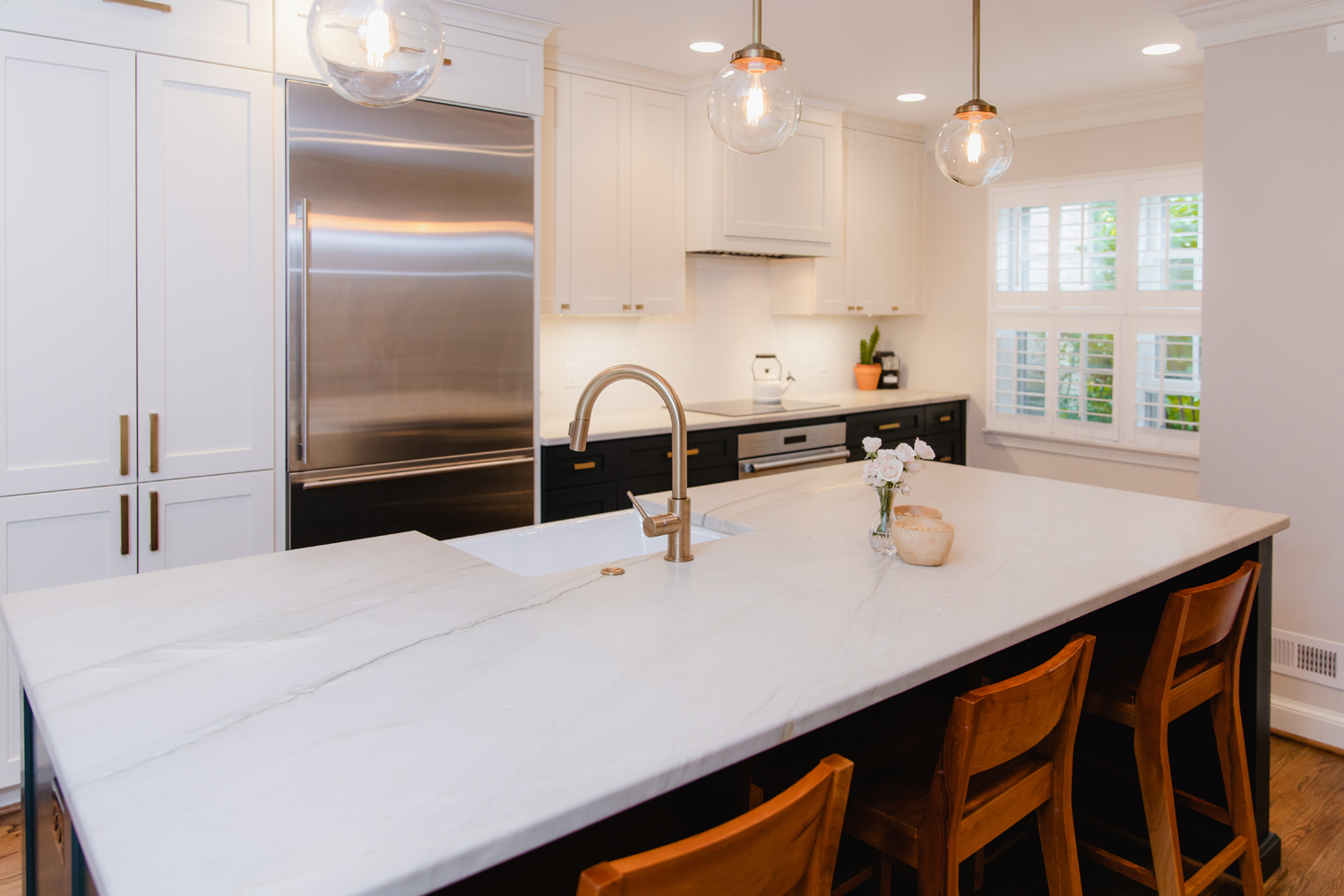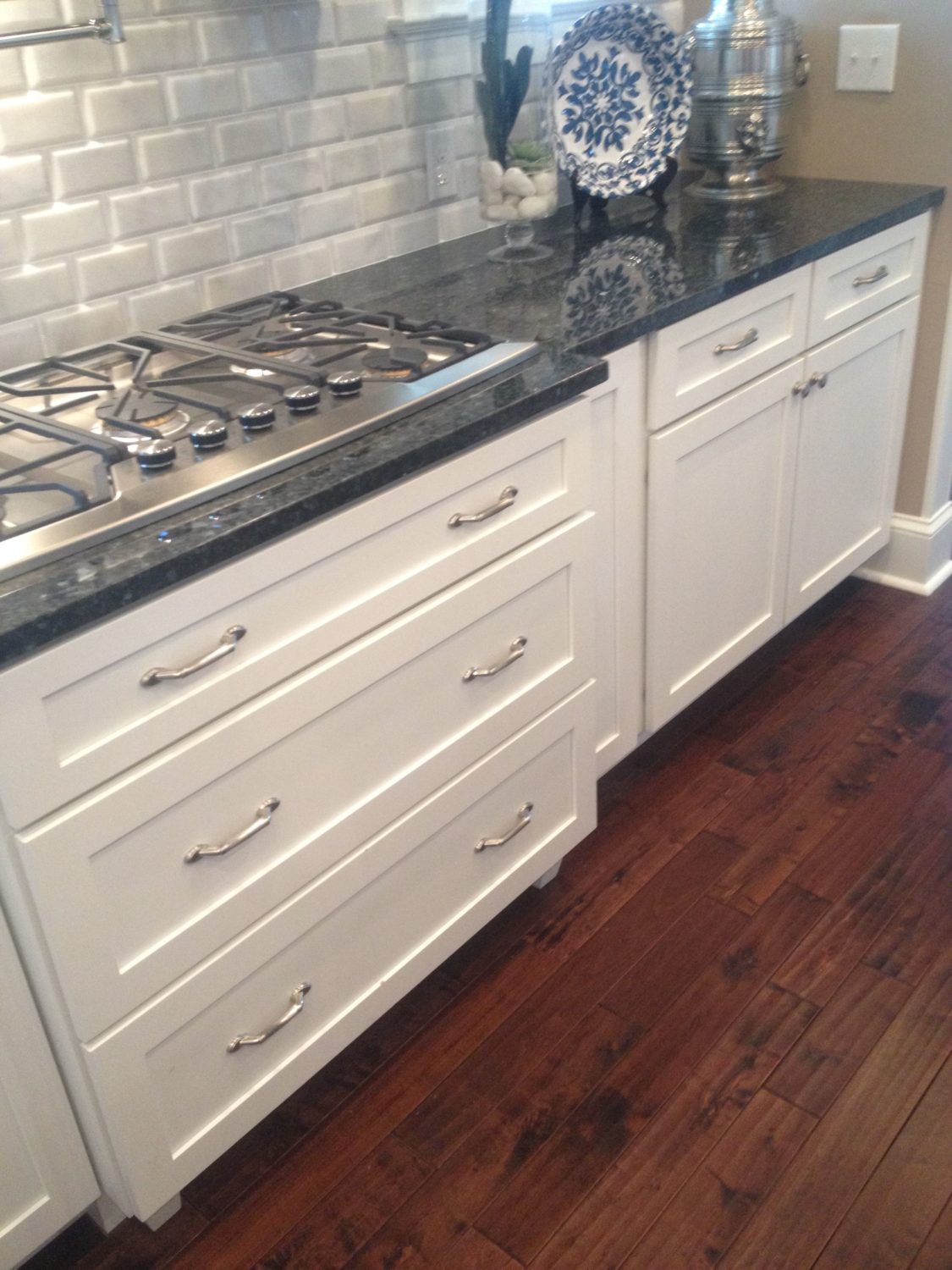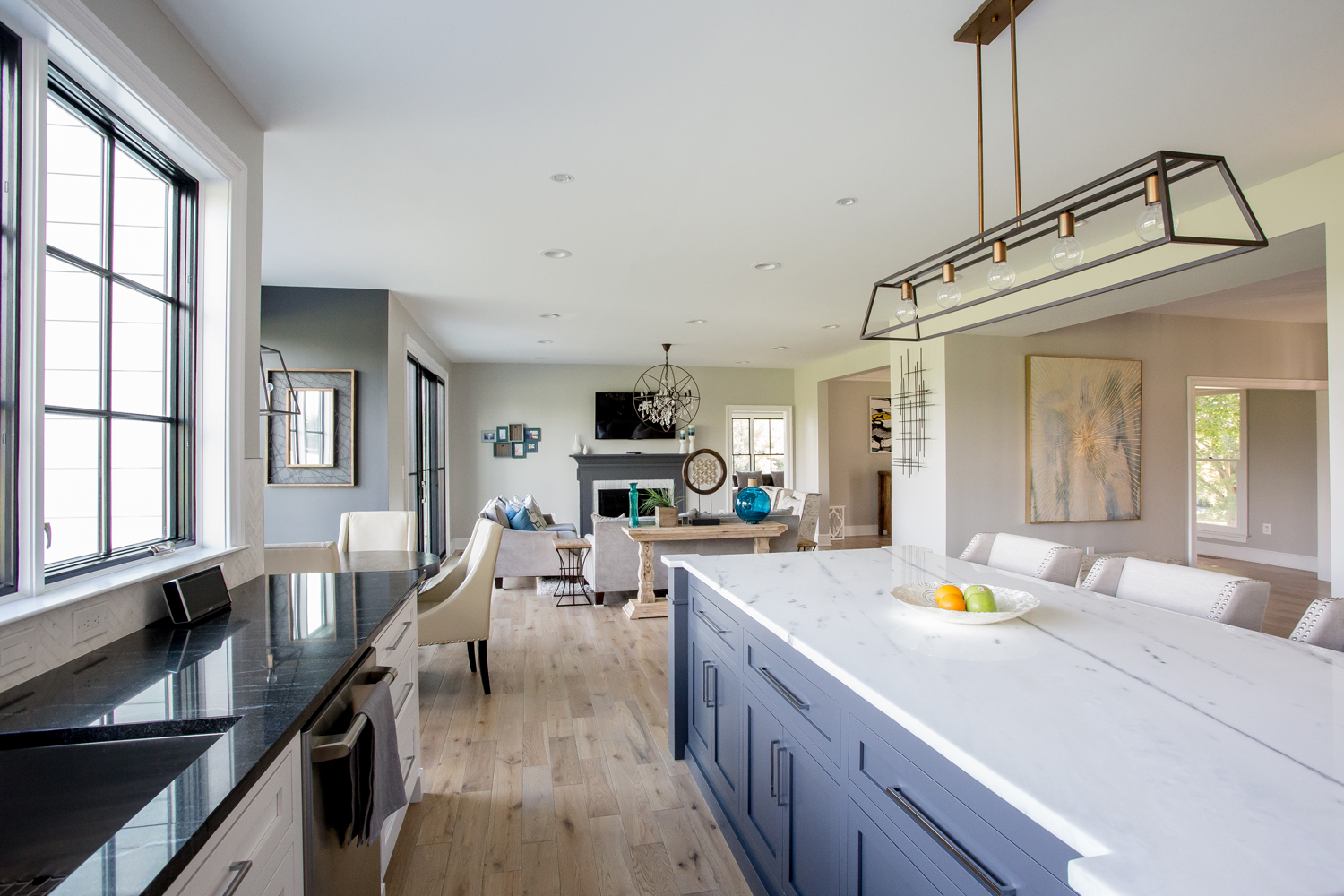Marble vs. Granite Countertops: How to Choose the Best for Your Remodel
Dreaming of a kitchen or bathroom remodel with countertops that elevate the entire space? Choosing between marble and granite countertops is one of the most important design decisions you’ll make. Both stones are durable, timeless, and luxurious, but they differ in appearance, maintenance, and performance. The right choice depends on your lifestyle, design vision, and how much upkeep you’re willing to commit to.
This guide breaks down the pros and cons of marble and granite, their unique characteristics, installation considerations, and how to decide which option is best for your home. If you’re planning a kitchen remodel or bathroom renovation in Washington DC or Maryland, this article will help you make an informed decision that balances beauty and functionality.
Dreaming of a new, well-designed kitchen with ample storage and lustrous countertops? Many stylish features personalize a kitchen’s luxurious design, and among the most elegant are natural stone countertops. But, how do you decide between two of the most popular natural stones: elegant marble or bold granite? Hammer’s designers can help you choose design selections and a countertop that will serve as a statement piece in your beautiful kitchen remodel.
Both marble and granite are highly sought-after options for your kitchen countertops, so what should you consider when making a decision? It all depends on your aesthetic design vision, how much maintenance you are willing to do, your needs in the kitchen, and your budget. Hammer’s designers have compiled a list of similarities and differences and key factors to consider when choosing between marble and granite countertops in the kitchen or bathroom.
At a Glance: Pros and Cons
Both marble and granite share similarities: they’re heavy, heat-resistant, natural stones offered in a wide range of colors and styles. However, their differences matter for daily use.
Marble
-
Elegant, flowing veining
-
Sophisticated, timeless appearance
-
Available in whites, grays, blacks, and unique hues
-
More porous and softer than granite
-
Requires frequent sealing and careful cleaning
-
Susceptible to etching from acids (wine, citrus, vinegar)
Granite
-
Dense, speckled appearance
-
Extremely durable and scratch-resistant
-
Broad variety of colors, including dramatic darks
-
Lower maintenance than marble
-
Resistant to heat and chips
-
Still requires sealing, but less often
Positives:
| Marble | Granite |
| Elegant Vein Pattern | Less Maintenance |
| Long, Fluid Lines | Less Expensive |
| Variety of Colors and Styles | Many Colors and Styles |
| Extremely Durable |
Considerations:
| Marble | Granite |
| More Expensive | Varied Composition Between Slabs |
| Susceptible to Staining from Acids | Potential to Stain from Oil |
| Can Scratch because Softer Material | Finish Can Scratch |
| More Porous | |
| Requires More Maintenance |
The Appearance of Marble and Granite Countertops
Marble: Sophisticated Veining and Elegance
Marble is known for its long, fluid veining and crystalline depth. Its formation from limestone under intense pressure gives it a smooth, polished look that feels unmistakably high-end. White Carrara and Calacatta marble remain classic favorites, while Danby marble from Vermont is prized for being less porous than imported varieties.
Marble comes in shades of white, gray, black, and even rose or green, with veins that create movement across the surface. Installed horizontally, these veins can create the illusion of a larger space—perfect for small kitchen remodels.
Granite: Natural Variety and Texture
Granite, an igneous rock formed from cooled magma, is denser and grainier than marble. It features flecks and specks in multiple colors—blue, green, black, beige, or red—that give each slab a one-of-a-kind appearance. Modern finishes like “leathered granite” add texture and matte appeal, especially popular for contemporary kitchens.
For homeowners in Washington DC kitchen remodeling projects, black granite paired with white cabinetry creates striking contrast, while warm-toned granite works beautifully in transitional and farmhouse kitchens.
Durability and Maintenance
Sealing and Stain Resistance
Both granite and marble are porous, which means they must be sealed to prevent stains. Granite usually requires sealing once a year, while marble needs more frequent upkeep. If water no longer beads on the surface, it’s time to reseal.
Marble maintenance tips:
-
Always use coasters for wine, citrus, and oils.
-
Wipe spills immediately to prevent etching.
-
Use gentle, pH-neutral cleaners.
Granite maintenance tips:
-
Still requires sealing but is less prone to staining.
-
Handles hot pans better without scorching.
-
More resistant to scratching from knives and heavy use.
Everyday Wear and Tear
Granite is the more durable choice for families with kids or for kitchens that see a lot of activity. It resists chips and scratches better than marble. Marble, while softer, is still long-lasting when maintained properly—and many homeowners love the patina it develops over time.
Installation Considerations
Both granite and marble require professional installation. Countertop fabrication involves cutting slabs to size, polishing edges, and making cutouts for sinks or cooktops. The weight and precision needed make DIY installation impractical.
During installation, your contractor will ensure the stone is leveled, sealed, and secured with adhesives. Ask your installer whether the stone comes pre-sealed, and plan to reseal regularly after.
Hammer Design Build Remodel’s kitchen remodeling services cover the full process—from design consultation to material selection and professional installation—ensuring that your countertop complements the overall remodel seamlessly.
Similar Maintenance
Design Goals: Which Countertop Matches Your Style?
Choose Marble If:
-
You want a showpiece island or vanity that feels classic and elegant.
-
You’re drawn to natural veining and subtle movement.
-
You don’t mind frequent maintenance and are careful with spills.
-
You want to add long-term resale value with a luxury feature.
Choose Granite If:
-
You need a family-friendly, durable surface that can handle daily use.
-
You like bold colors, flecked patterns, and textured finishes.
-
You prefer lower maintenance with high durability.
-
You’re remodeling with budget-conscious flexibility.
Cost Comparison
Although there are a variety of countertop options available to complete your design, natural stone is a solid choice for kitchens and bathrooms. Both marble and granite are on the higher-end of cost, with marble often costing more per square foot than granite. Both require professional installation because of the weight, size, and tools required to fabricate the layout which requires seams, corners, and cutouts for a main or an island sink.
In general, marble starts at $100 per square foot installed, while granite begins at $75 per square foot installed. However, the higher-end marble options can top $200 per square foot installed, and granite options can cost $175.
Installation
Marble and granite installation by a professional begins with a template of your cabinet layout and then transferred to a slab, which is then cut and fabricated to fit around cabinet edges, corners, and sinks. The countertops are installed with the slabs set directly onto the cabinet or a plywood substrate and secured with silicone adhesive. Upon installation, confirm with your installer if the natural stone has been sealed or if you or your contractor are required to seal it immediately. Granite is often sealed once a year, while marble needs to be protected more frequently with a sealant designed for porous stone surfaces.
Common Mistakes to Avoid
-
Skipping sealing – Even granite can stain if left unsealed. Always reseal as recommended.
-
Using harsh cleaners – Avoid acidic or abrasive products; stick with stone-safe cleaners.
-
Not hand-selecting slabs – No two stones are alike; always view slabs in person before installation.
-
Placing hot pans directly on marble – Trivets are a must for protecting softer stone.
FAQs About Marble and Granite Countertops
Are marble countertops worth it in kitchens?
Yes, but they require diligent care. Marble is better suited for lower-traffic kitchens or homeowners who appreciate the patina it develops.
Is granite better than marble for bathrooms?
Granite resists water and stains better, but marble remains a popular bathroom choice for its elegance.
Can you mix marble and granite in one kitchen?
Absolutely. Many homeowners use marble for the island and granite for the perimeter counters to balance style and durability.
What’s the average lifespan of marble and granite countertops?
When properly maintained, both can last a lifetime—50 years or more.
Which adds more resale value?
Both add value, but marble often signals luxury, while granite appeals to buyers seeking durability.
Conclusion
Whether you choose the timeless elegance of marble or the rugged durability of granite, both options transform kitchens and bathrooms into spaces that are as functional as they are beautiful. The right choice depends on your design goals, lifestyle, and maintenance preferences.
Hammer Design Build Remodel has helped countless homeowners in Washington DC, Bethesda, Chevy Chase, and Silver Spring bring their dream kitchens and bathrooms to life. If you’re considering a remodel, our team can guide you through countertop selection, material sourcing, and full project design.
Ready to choose between marble and granite for your remodel? Schedule a design consultation today or call 202-559-3990 to get started with expert guidance tailored to your home.









